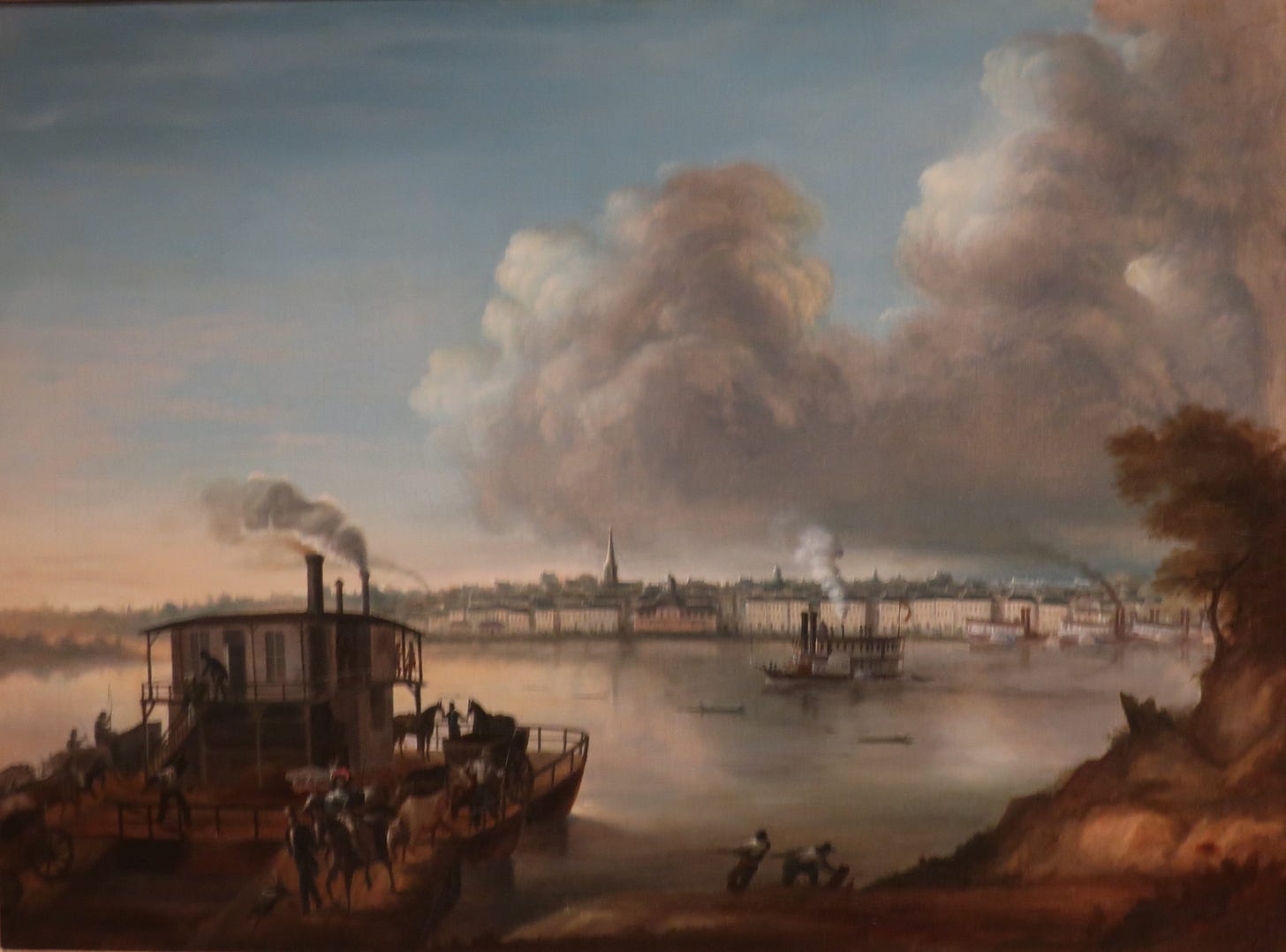Kelly L. Schmidt, “Slavery and the Shaping of Catholic Missouri, 1810-1850,” Missouri Historical Review 116, no. 3 (Apr. 2022), 173-211.

Historian Kelly L. Schmidt at Washington University in St. Louis wrote a story that ought to be told, though perhaps in more complicated and nuanced ways. Schmidt tackles the history of members of the Catholic Church in St. Louis throughout the early American Republic period.1 Her thesis is simple: Scholars who argue that Catholicism breed a more lenient and gentler slavery are wrong (she is here arguing specifically against Frank Tannenbaum) given the example of slavery in St. Louis area among Catholic leadership and lay members. Two other large arguments shape her work: first that because of slavery and the work regime enforced upon African Americans, Catholicism was able to establish numerous institutions (including St. Louis University and local hospitals) and that Black resistance interconnected people of color and was constant throughout the nineteenth century.
Scholarship on slavery is important to understanding the dynamics of early American society and the growth of cities, regions, and institutions. Schmidt is right to point out slavery and its role in Jesuit institutions in St. Louis. The hardship and brutality of slavery should not be minimized nor should it avoided in narratives of the past. I am a firm believer that “the truth” alone can set people free. However, as is my constant critique against scholars of slavery’s capitalism, in pointing to the role of slavery in American life, Schmidt overextends her arguments in ways that are not historically accurate. In her efforts to push society to take seriously the role of slavery in the Missouri Catholic Church, she created as fictional a world as those who say slavery was not a core part of the American economy or non-existent in the Catholic church. I will focus on two statements that are closely related to each other.
The first statement is that “What is little known about these locally revered leaders is that they were slaveholders - and it was the people they held in bondage who did much of the labor that enabled their enslavers to shape Catholicism in the region.” She later states, “Enslaved people were foundational to the development of Catholic Missouri.” The initial premise of this statement, that the role of slavery in the lives of some of St. Louis’s leadership is not understood enough is correct. An article tackling the role of slavery in St. Louis Catholic life is important, particularly for regional and local histories. What is problematic is the second part of the statement, that implies that it was only through enslaved labor that Catholic leadership were able to shape the region or the Catholic church was able to grow in Missouri. Ultimately, the main problem with this argument is the over emphasis on a single explanation to show growth. In other regions Catholicism’s growth (think the areas North of the Mason Dixon Line) was not tied to slavery. She is correct that enslaved labor was important in developing wealth of helping at certain institutions, however she fails to note the growth of Catholic migration into the city. Overemphasis thus obscures non-slave labor and the efforts of leaders themselves. Her evidence demonstrates slavery was important to St. Louis Catholic efforts, however lacks the economic and numerical sources to provide convincing evidence that it was only through enslaved labor that institutional growth was possible. A slight modification of the thesis would have rectified this problem. Even the numbers of enslaved people owned by Catholic institutions is largely absent making it hard to accurately see how essential such labor was to the functioning. Another factor is Schmidt failing to show the lack of non-slave labor in Catholic efforts. Arguments that slavery was solely responsible for growth ignores a host of factors that can be integrated into religious institutions. Ultimately, Schmidt’s essay has the feeling of an essay written with a thesis in mind, rather than allowing the nuance and contours of the past guide the thesis.
This problem can be seen in numerous works (on both sides of the debate) of slavery’s role in the early American Republic. The Marxian style assumption that economics is all that matters and that capitalism is inherently oppression, rather than a tool that can quickly be used to oppress others, leads to arguments that fail to explain the complexities of the past. Current academic trends to focus on slavery, while important, have also perhaps led to an overemphasis on the economic importance of slavery and its ability to control the economy.
My intent is not to disparage Schmidt as a scholar, though I disagree with some of the conclusions she arrives at in her essay. Her work has numerous points that are essential in understanding early St. Louis and Missouri history that often are overlooked. However, the presentism of seeking to impose race and slavery as the all defining factor of Catholic life and growth in Missouri (in what seems to be the main idea that all America and its’ institutional success is tied to slavery) is not a strong argument.
As noted earlier, a slight change would make a more historically accurate argument. Scholars may wonder if such a small change to be accurate matters. As one who believes that ultimately “truth will prevail,” narratives that fail this test of truth will be left behind. Less truthful narratives are unable to unite people and only foster division and anger. Furthermore, academics are desperately in need of reestablishing trust which has fallen to historic lows.2 Not overextending arguments is one way to start doing this.
Robert Swanson



